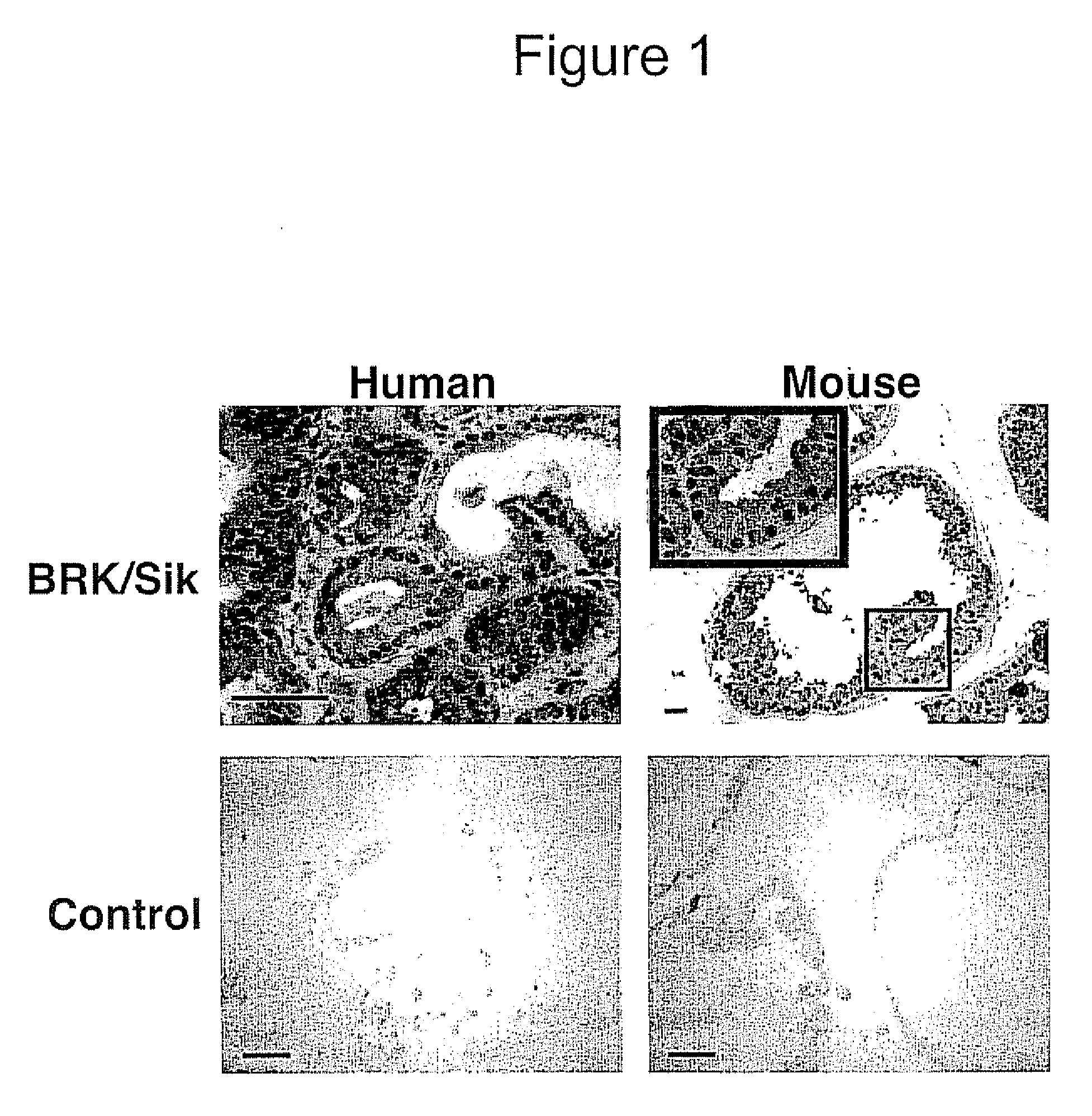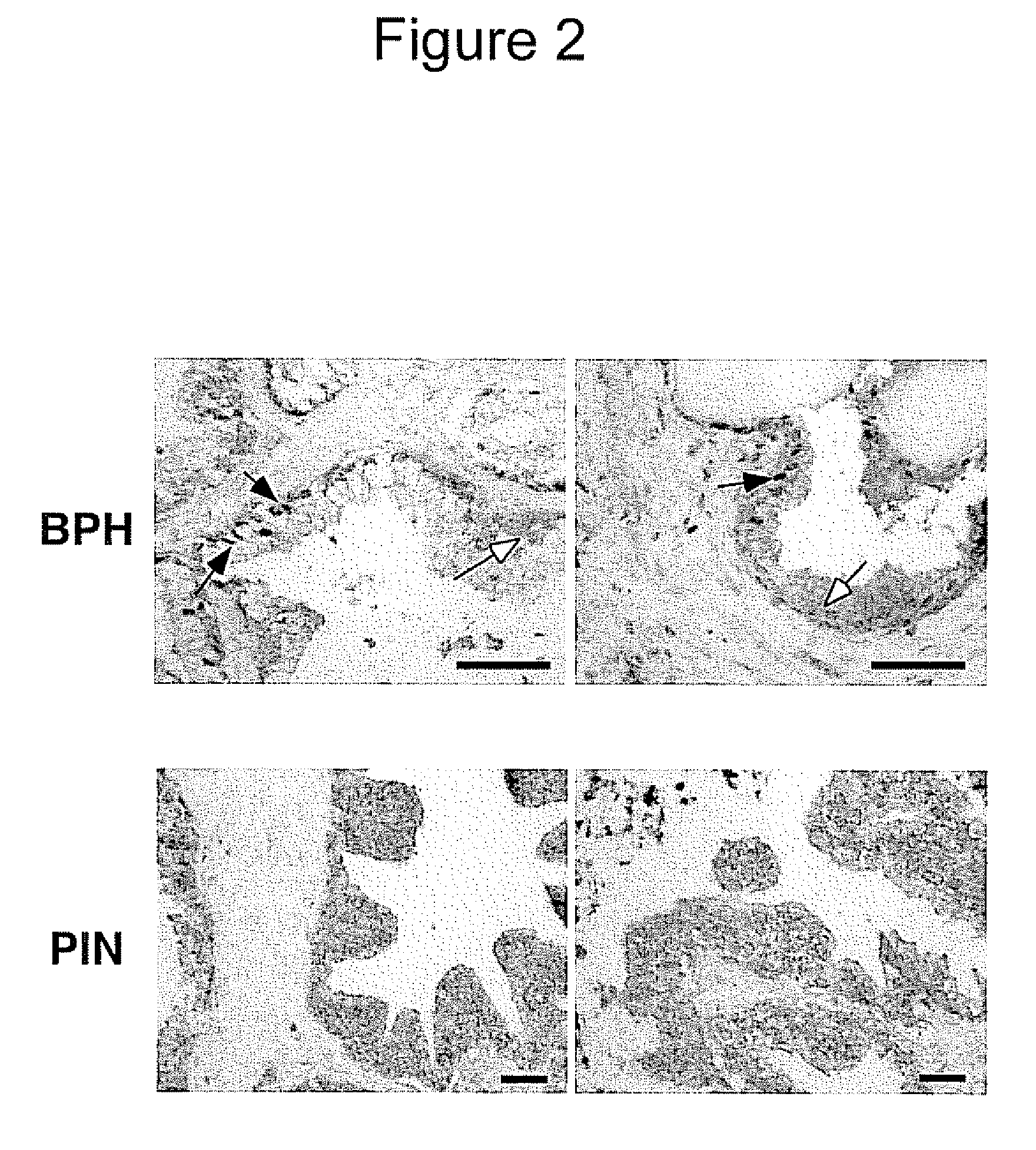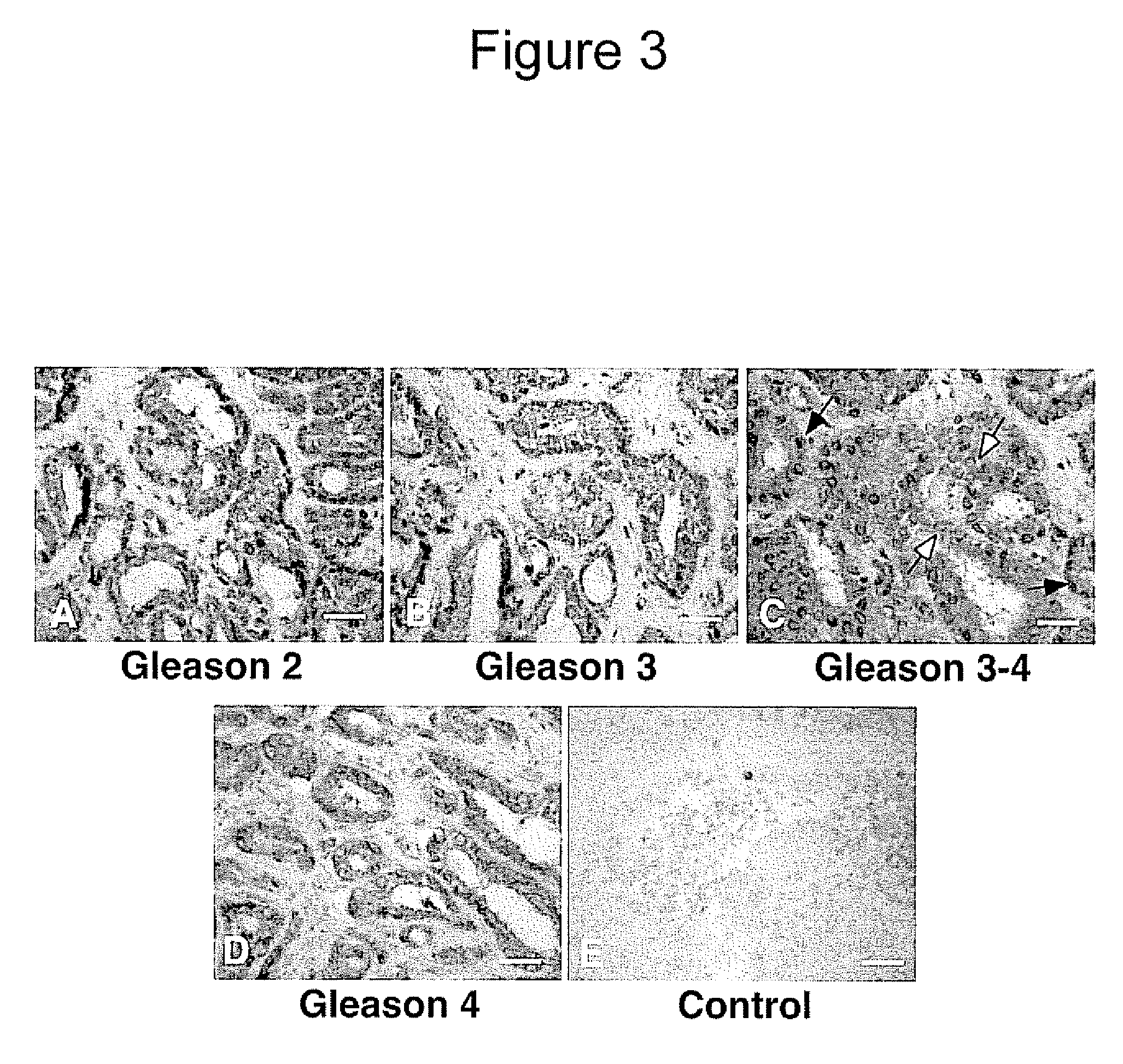Altered Intracellular Localization of BRK/Sik Protein Tyrosine Kinase in Human Prostate Tumors
a technology of tyrosine kinase and human prostate cancer, which is applied in the field of animal detection methods of abnormal prostate conditions, can solve the problems of ineffective methods, large deleterious side effects, and difficult treatment of prostate cancer
- Summary
- Abstract
- Description
- Claims
- Application Information
AI Technical Summary
Benefits of technology
Problems solved by technology
Method used
Image
Examples
example 1
BRK Expression in the Nuclei of Normal Human and Mouse Prostate Secretory Epithelial Cells
[0046] Expression of breast tumor kinase (BRK) and its mouse ortholog, Sik, was examined in sections of adult human and mouse prostate, respectively, using immunohistochemistry (FIG. 1). Ventral mouse prostates were surgically removed, fixed in 4% paraformaldehyde in phosphate buffered saline (PBS) overnight at 4° C., and washed in 70% ethanol, The tissues were then processed for paraffin embedding by passage through 70% ethanol for 1 hour (two times), 95% ethanol for 1 hour (three times), 100% ethanol for 1 hour (three times), xylene for 1 hour (two times), and liquid paraffin embedding medium (Fisher Scientific) at 62° C. for 1 hour (two times). The tissues were then mounted in paraffin blocks. Human prostate tissue samples were prospectively collected at the time of surgery for radical prostatectomy at Michael Reese Hospital, Chicago, Ill., in accordance with IRB guidelines, and embedded i...
example 2
BRK Localization is Altered in Poorly Differentiated Prostate Tumors
[0049] Fifty-eight individual paraffin embedded human prostate surgical samples were graded according to Gleason's microscopic grading system by a board-certifled pathologist. Gleason's system involves histologic grading based on the pattern of glandular formation, assigning a number of 1 to 5. Lower numbers are well differentiated and higher numbers are poorly differentiated (Gleason & Mellinger, 1974, J. Urol. 111:58-64). Among the samples examined, normal, benign, preneoplastic, and malignant conditions were observed. Sections from each surgical sample were stained with anti-BRK antibodies and two individuals analyzed the sections by scoring at least three fields per slide using light microscopy. The intensity of BRK nuclear staining was given a score on a scale from 1 to 100%, with 100% representing the intensity as displayed in the normal glands, since they displayed uniform intensity throughout their luminal...
example 3
Localization of San68 is Unaltered-in High Grade Prostate Tumors
[0053] Since BRK localization changes as tumors dedifferentiate, the localization of Sam68, a substrate of BRK, was also examined to determine if the state of differentiation affected Sam68 localization. Sam68 was localized in human and mouse prostate using immunohistochemistry as described above. Sam68 was detected in nuclei of luminal epithelial cells in both human and mouse prostate (FIG. 5A). Sections from the same tumor tissue blocks used to study BRK localization above were stained with anti-Sam68 antibodies and examined by light microscopy. While BRK showed loss of nuclear localization in the less differentiated tumors, Sam68 localization was unchanged in the BPH, PIN, and tumor samples compared with its expression pattern in normal tissues. FIG. 5B shows Sam68 and BRK (localization a Gleason grade 4 tumor and in PIN.
PUM
| Property | Measurement | Unit |
|---|---|---|
| size | aaaaa | aaaaa |
| size | aaaaa | aaaaa |
| Size | aaaaa | aaaaa |
Abstract
Description
Claims
Application Information
 Login to View More
Login to View More - R&D
- Intellectual Property
- Life Sciences
- Materials
- Tech Scout
- Unparalleled Data Quality
- Higher Quality Content
- 60% Fewer Hallucinations
Browse by: Latest US Patents, China's latest patents, Technical Efficacy Thesaurus, Application Domain, Technology Topic, Popular Technical Reports.
© 2025 PatSnap. All rights reserved.Legal|Privacy policy|Modern Slavery Act Transparency Statement|Sitemap|About US| Contact US: help@patsnap.com



